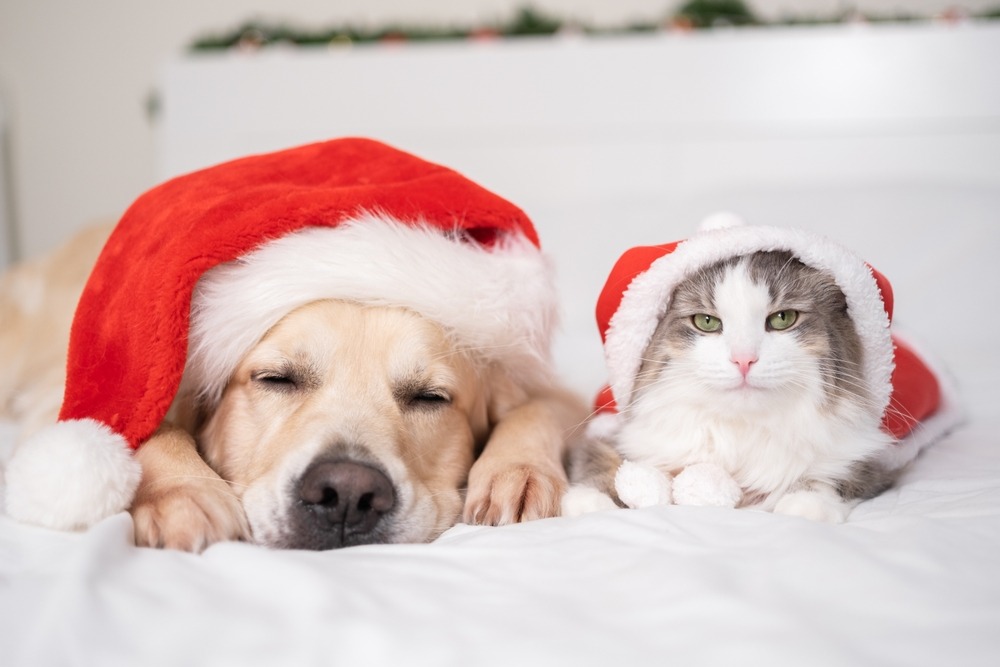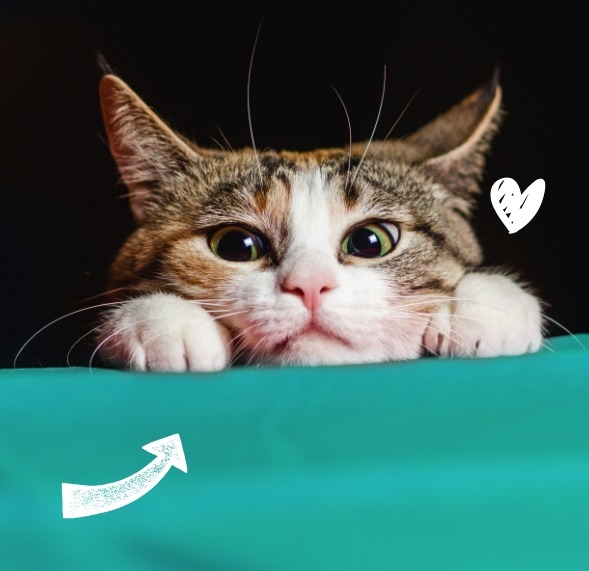
In this day and age, it’s completely normal for people to label themselves as either a ‘cat person’ or a ‘dog person’. Both species bring completely different things to our lives but how much difference is there between how cats show their love and how dogs show their love?
Here at Webbox HQ, we sat down with TV vet and animal expert, Dr James Greenwood, to have all of our burning questions answered. Check out what we learned from Dr James about our fur babies…
What is the difference between a cat’s love and a dog’s love?
“We often compare dogs and cats as though they’re very similar animals. The reality is that dogs and cats are completely different in everything from their behaviour, evolution, veterinary care to dietary needs.
However, one thing dogs and cats do have in common is the unwavering love they receive from their owners. Often quoted as the two most popular pets in the UK, we have a lot of love to give for our four-legged friends. The other similarity between the two is the amount of love they give us in return. Cats and dogs may exhibit that love differently, but if we as owners can better understand the subtle differences in how the two animals behave, it becomes much clearer that the love between people and their pets is mutual.”
Is it true that cats are less affectionate?
“Absolutely not, we just need to better understand how cats show their affection.
To do this, it’s important to understand what it is your cat would like from you! Cats are only partially domesticated; the majority of cats could probably fend for themselves quite effectively if they needed to. They can hunt their own food, find their own shelter and are quite capable of defending their chosen territory. When we try to bring cats indoors or offer to share our homes with them, we have to make sure we actually make our homes as feline friendly as possible, especially if there’s more than one cat in the house.
Cats are absolutely not less affectionate if given the right start, the right home and time is taken to understand their individual personalities. It’s true that not all cats are cuddly; some are naturally more timid and others are incredibly reliant upon their human companions for physical contact and interactions.
If the most timid of cats doesn’t want to come and sit on your lap, it doesn’t mean they don’t like you, but rather, they are perhaps trying to communicate that would prefer somewhere quiet to hide and escape to. Once that is provided, they will appreciate you so much more because you have understood their needs and catered to the accordingly. In time, they may well start to feel more confident and become more accepting of physical attention. In my experience, cats often fall in love with their pet parents the moment you provided them with a safe, warm place to rest.”
Why do we have to earn a cat’s trust, but a dog’s is easily granted?
“It might seem like this is the case on the surface, but it’s actually more complicated than this. Essentially, dogs have evolved as a social species whereas cats are a solitary species.
Dogs are more naturally reliant upon their owners; they are social group animals able to form strong bonds with different species to their own. With the right approach and positive training techniques, they can form extraordinary connections with their pet parents.
Cats, on the other hand, are solitary and therefore don’t rely on us in the same way dogs do. This means that whilst some cats adore human company, others are actually very happy on their own. Sometimes, a ‘less is more’ approach works better with cats, where we don’t over-fuss and give them space instead. This goes a long way towards building trust and mutual understanding over time.”
What’s the best way to show affection to a cat?
“Always be calm, move slowly and talk quietly. A gentle scratch or stroke under the chin or behind the ears is always appreciated! Give them somewhere to escape to and hide – this is their den and must be respected as their safe space when they need a time out.
Play time is super important – fishing rod toys or hunting games are great but do always allow your cat to successfully catch the toy to ensure they feel a sense of fulfilment and satisfaction as this encourages an endorphin release from the brain which act as ‘happy hormones’.
If you catch your cat looking at you directly in the eye, try offering them a slow blink. Believe it or not, a slow blink is a sign that your cat is really chilled out – so we can replicate that by offering a blink back to show them we are equally relaxed.”
What’s the best way to show affection to a dog?
“Most dogs love nothing more than spending time with their owners so put some thought into how that time can be best spent. A daily walk is essential; dogs love using their senses to smell and explore and need to burn off calories exercising. I would also suggest setting up obstacle course or using puzzle feeders to get them thinking and problem solving.
Food is a big motivator for most dogs and you can use this to your advantage when training by using treats as a reward for good behaviour. One great option to consider here are the Webbox Tasty Sticks; they are suitable for puppies so you can offer them from the start to encourage good behaviour. It’s also crucial to feed a balanced diet, as high quality nutrition contributes massively to dogs’ overall well-being.
It’s also worth teaching our dogs how to be alone – gradual time spent on their own, with long lasting chews or toys to keep them occupied, is key to their development. Independence is necessary so they don’t become overly reliant on their pet parents or develop attachment issues.”
What are the top signs that your cat loves you?
“There are loads of subtle hints your cat might give to show they love you. Licking and grooming is a big sign of affection as it’s almost like cats saying, ‘I’ll scratch your back if you scratch mine’. If your cat does this, it likely means that they see you as one of their own.
Eye contact is usually a particularly threatening sign in cats. However, if you ever catch them looking you directly in the eye with a soft slow blink, they are signalling that they know you’re not a threat.
Kneading is another unique behaviour in cats – there’s a lot of theories as to why cats knead with their front paws, but some suggest it is similar to a kitten trying to signal to its mother for milk. Therefore, if your cat does this to you, it’s likely they see you as a family member. Watch out – the more they love you, the more intense the kneading can become so have some blankets to hand in case you need to protect your legs!
Scenting is a key factor in cat communication and so those little adorable cheek rubs and head butts are all signs of your cat trying to establish that you belong to the same group by all smelling the same.
Finally, if your cat voluntarily chooses to snooze on your lap – this is the ultimate sign they completely trust you. Cats do not like to appear vulnerable to others and nap time leaves them exposed so if they’ve chosen to sleep on or near you, it proves they see you as someone they can trust completely.”
What are top signs that your dog loves you?
“It’s all about the tail with dogs! They can express a whole range of emotions through their tail wag. Whilst it’s important to note not all tail wagging is a sign of happiness, there are two types that signal pure joy in our dogs. Firstly, the whole-body wag that starts at the shoulders and wiggles all the way down to the tip of the tail is quite literally their happy dance! Secondly, the helicopter tail wag is usually reserved for those who are viewed as especially important.
Dogs rarely enjoy being hugged or restrained, but if they choose to come and snuggle into you on their terms – it is likely they see you as a trusted member of the family.
Finally, that super excited greeting when you get back from leaving the house – the jumping and licking, sometimes they may bark or bring you a toy – is a genuine signal that they are pleased to see you. It’s worth checking our own behaviour here too as it can lead to separation challenges if we ‘over-do’ the meet and greets. So, try your best to stay quite calm if you can.”
What are top ways to bond with kittens and puppies?
“Time and patience is key – it can take weeks and sometimes even months before you both feel completely at ease. Take the time to really learn about your new pet and their individual personality.
Playtime and training are great ways to discover what motivates your pets – often food and portioned treats are a great starting point as this is the easiest way to establish yourself as someone kind and trusting. Try to always link giving a treat to a specific desired behaviour – that way you’re teaching and rewarding your pets that this is the behaviour we like to see from them. It’s called positive reinforcement and is a great way to help build that bond.
Webbox offers a range of puppy and kitten treats that are perfect for engaging and building emotional connections with pets. In terms of meals, Webbox Naturals have puppy and kitten options, as well as adult and senior varieties, so you can focus on your pet’s health at every life stage.
It doesn’t have to be a treat every time, sometimes a stroke or some verbal praise is sufficient, or for some puppies and kittens, a toy is an even greater motivator. Spend time working out what they love and use it to your advantage to make friends with your pet.
It’s also important to respect their boundaries – create safe spaces around the home where your puppy or kitten can retire to. Everyone in the house (especially the children) need to understand that when the puppy or kitten has chosen to take themselves off for a nap or some down time, humans must not disturb. This really helps our pets understand that they are safe, and they can feel totally comfortable in play and down time.”
Is there anything pet parents shouldn’t do when trying to bond with their pet?
“Try to make everything positive and avoid punishment techniques. If your pet doesn’t seem comfortable with a certain situation (they may back away, try to hide or even show some early signs of aggression) then it’s important we pick up on this and don’t force them into anything they’re not comfortable doing.
Instead, take small steps using positive reinforcement (e.g., with treats) to gradually introduce our pets to these new situations and give them time to realise everything is ok. The age old ‘rub their nose in it’ or ‘throw them in at the deep end’ are totally unacceptable as training methods and studies have shown these methods just don’t work.
It can feel overwhelming when everyone is giving you their advice or opinion with your pet, so the best thing to do in these circumstances is team up with a behaviour professional to create a clear, structured plan and this will set your pets up for success throughout their adult life.”
What are the top signs of discomfort in cats and dogs?
“Cats rarely communicate using sound – so if you’re hearing lots of meowing, hissing or even purring (which can be a sign of pain and not always a sign of contentment) then it’s worth considering what might be causing this.
We can also pick up on body language in cats – for example a slow twitching tail tip is the first sign that they are becoming irritated. Spraying around the house or constantly fleeing from you may also be a sign that they are uncomfortable in their environment. Cats are particularly prone to stress, and it can even lead to physical health issues, so it is really important to address these issues early.
Anxiety in dogs can exhibit itself in lots of different ways and can be misinterpreted by owners as ‘over confidence’ or ‘bad behaviour’ so for example scratching at doors or excessive barking, licking, or pacing could actually be a sign that your dog is struggling for some reason.
Dogs do not have the emotional capacity to act out of spite – if they are showing unwanted behaviours, it is not to annoy you but it is rather a way of them communicating their discomfort towards the situation. So, it is always important to ask why a dog is behaving in a certain way instead of immediately jumping to blame them.”
We’d love to know how your pets show you love, let us know on social!

Shop for Dogs
Personalise your search:
Shop for Cats
Personalise your search:
Our Most Popular Products

Webbox Dog Treasure Hunt Eggs
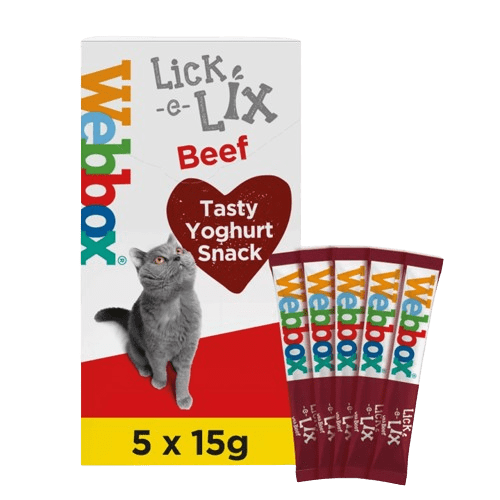
Webbox Lick-e-Lix with Beef Cat Treats
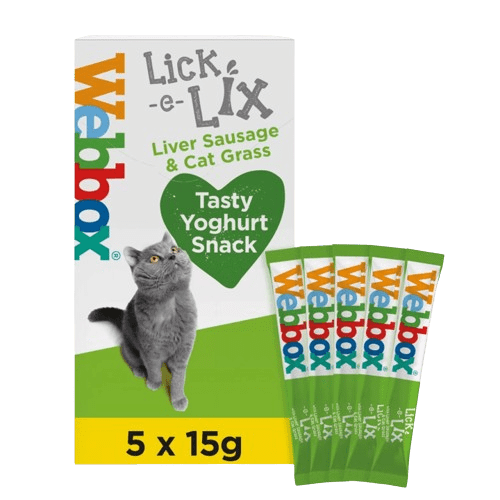
Webbox Lick-e-Lix Liver Sausage & Cat Grass Cat Treats

Webbox Lick-e-Lix Cheese & Taurine Cat Treats

Webbox Lick-e-Lix Chicken Cat Treats
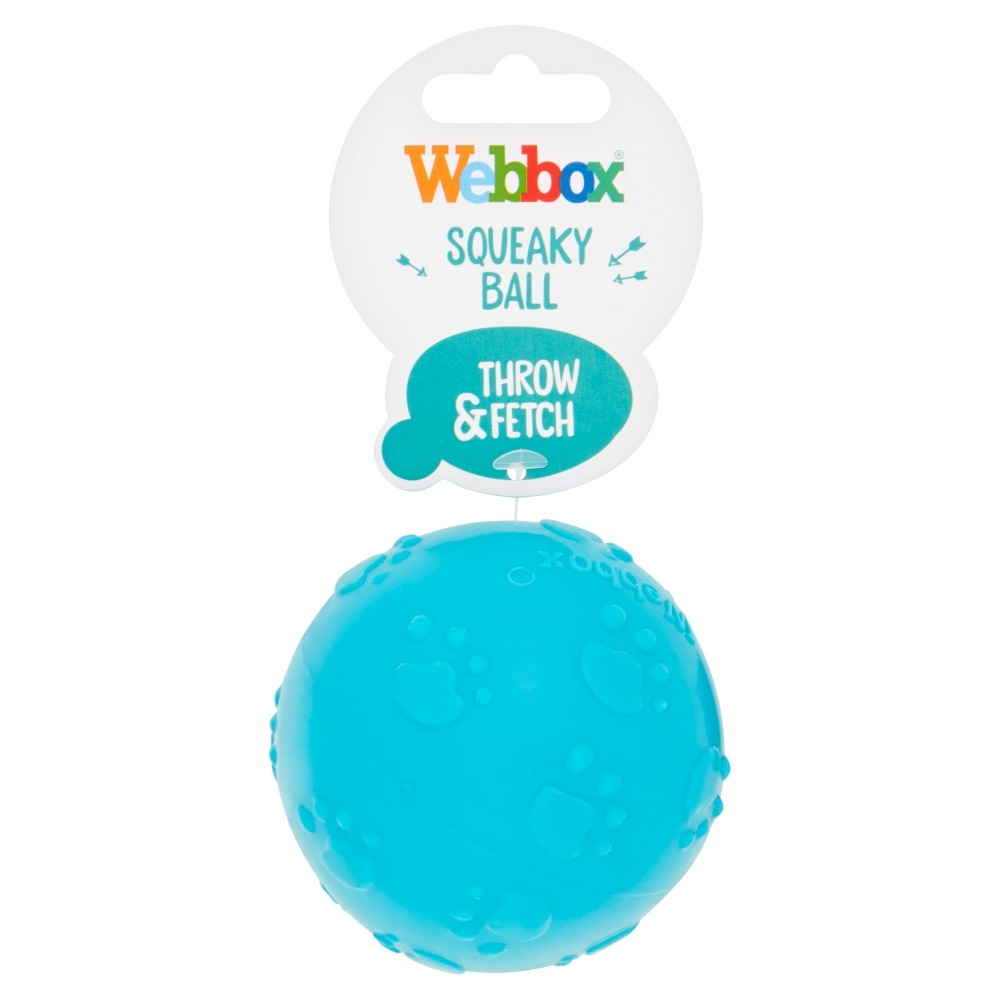
Squeaky Ball
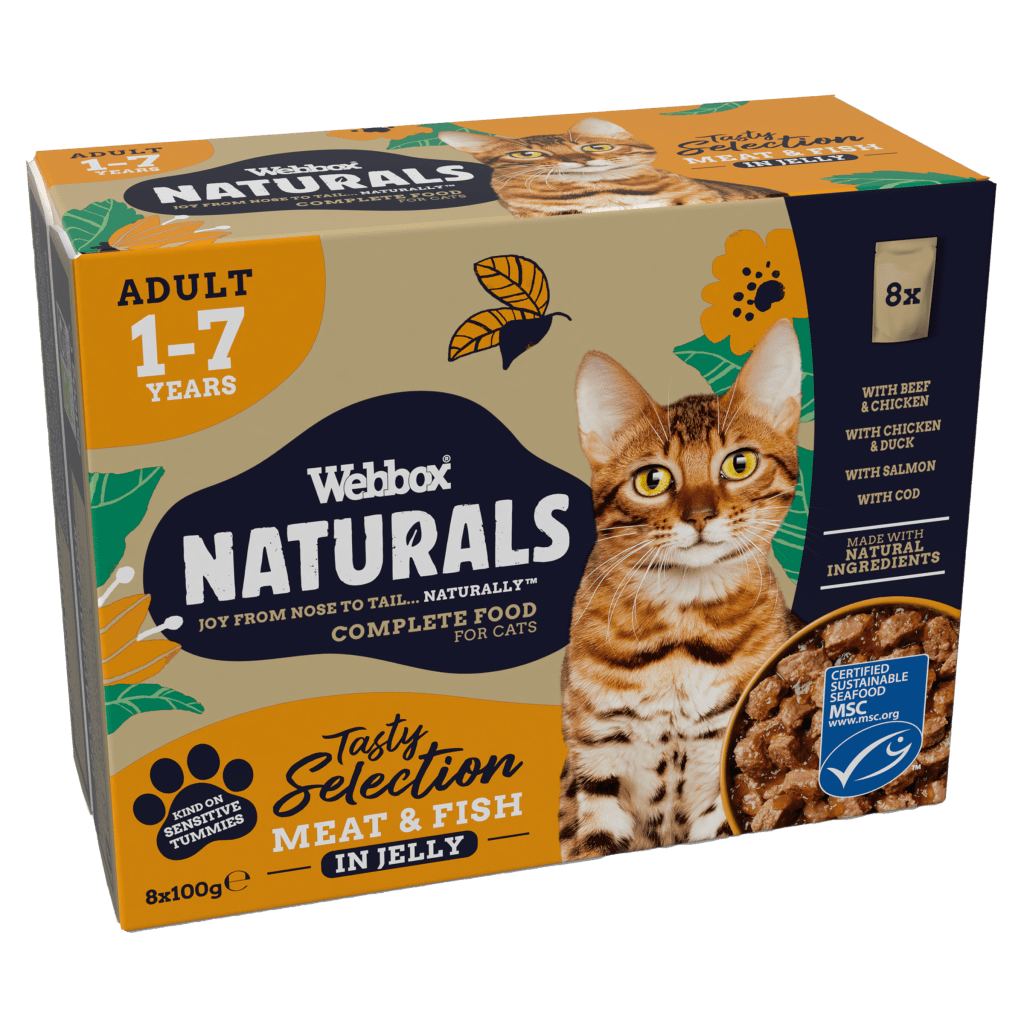
Webbox Naturals Fish & Meat in Jelly Wet Cat Food

Webbox Naturals Tuna Mousse Wet Cat Food
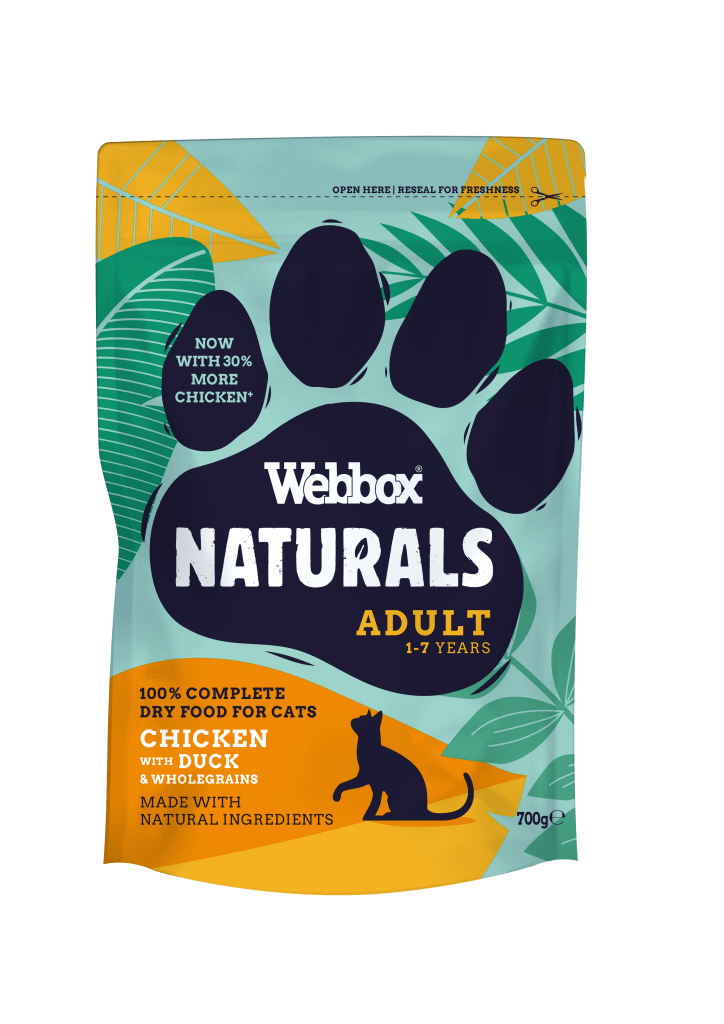
Webbox Naturals Dry Adult Cat with Chicken and Duck Dry Food

Webbox Cat Easter Egg
Get the latest tips ‘n’ advice
Want to find out interesting facts and get helpful tips?
Need help choosing the right food?
Try our Pet Food Finder.

 FREE delivery on orders over £40!
FREE delivery on orders over £40!



